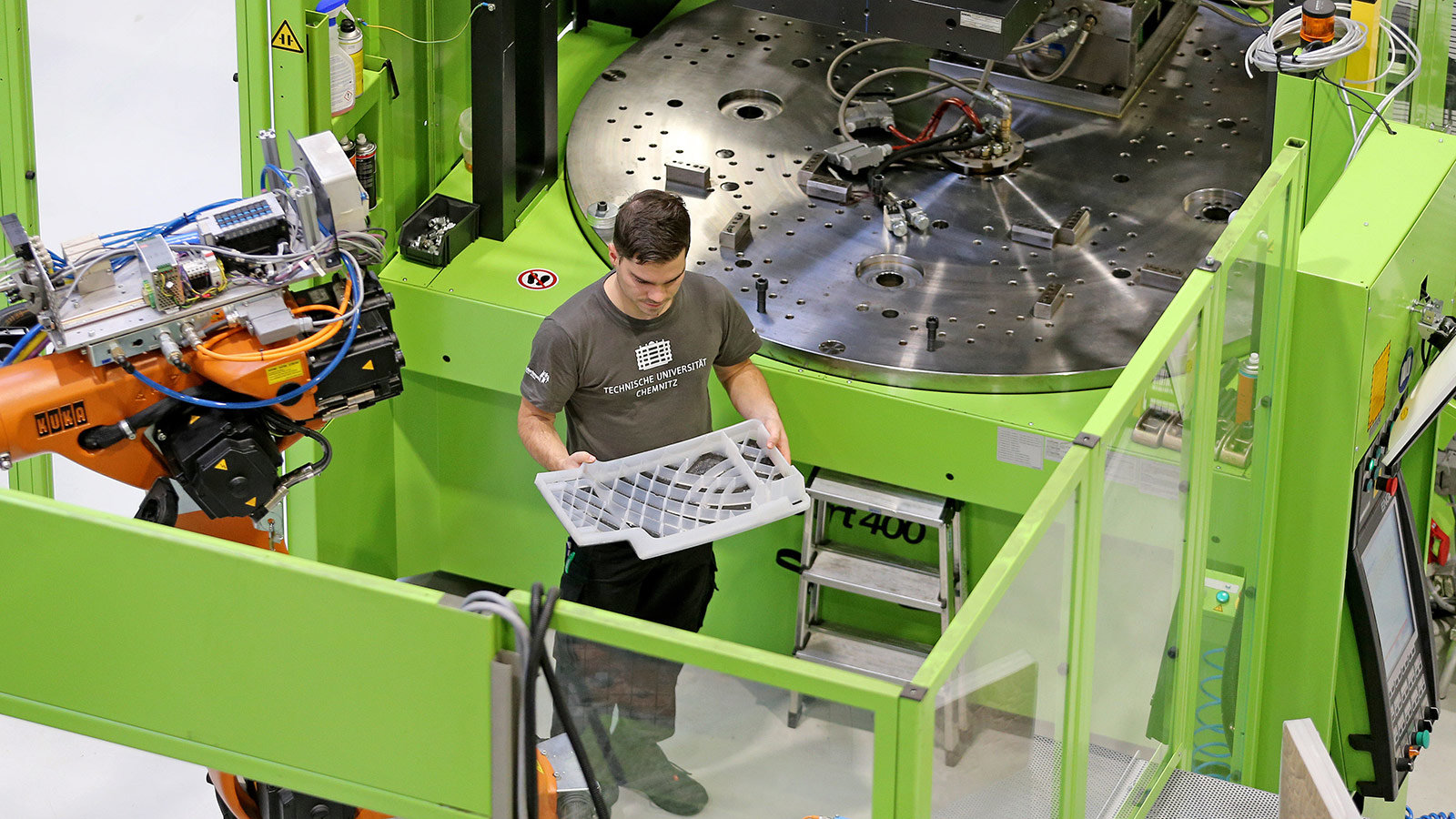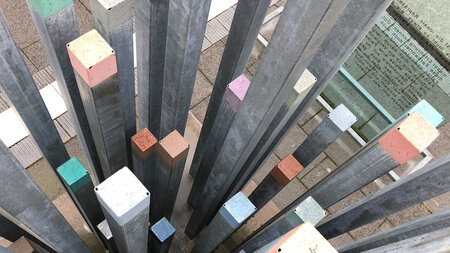Lightweight construction protects the environment and increases car safety
Chemnitz researchers reduce the weight of the load-through system on the backseat of a SUV by more than half, production costs decrease by approx. 30%
-

Technician René Morgenstern examines the structure of the new load-through system. The components are manufactured in the plant complex “MERGE Technology Center” of the Chemnitz University where high-performance plastics and thermoplastic fiber composite semi-finished tools can be processed. Photo: Chemnitz University/Jan Woitas
A winter holiday requires a safe stowage of ski and snowboard. That is why many vehicles have a load-through system for long objects in the backseat. And exactly this load-through system was investigated by researchers of the Federal Cluster of Excellence MERGE and the Institute of Lightweight Structures of the Chemnitz University of Technology in order to reduce weight and costs. After months of intensive work, they finally succeeded. “By developing a completely new design of the metal component, with an original weight of 3,85 kilogram, we were able to reduce its weight by more than half down to 1,64 kilogram”, says Prof. Lothar Kroll, Director of the Institute of Lightweight Structures and speaker of the Federal Cluster of Excellence MERGE.
The Chemnitz development is made of continuous fiber-reinforced thermoplastic prepregs combined with thermoplastic injection-moulded components and is based in its design on the metal variant of the current Audi Q5. “For the very first time, this structural component was designed and technologically implemented as a fiber-reinforced composite prototype and will be refined for series production”, Kroll adds. Various textile reinforcements were used to make sure that the load-through system shows high stiffness, strength, and stability characteristics. “The first step in the manufacturing process is the thermal moulding of the various textile materials that have integrated sensors”, illustrates the Chemnitz professor. The subsequent injection moulding process finalized fully automated the composite with plastic.
The load-through system in a car is in general a highly crash-sensitive component. In the case of a crash it has to secure the load inside the luggage compartment, protecting the passengers from flying luggage or objects. “The novel, very light load-through system remains during the crash in its structure and absorbs the energy of the impact”, Kroll ensures. Furthermore, the at the Chemnitz University developed load-through system gains another significant importance. “With every kilogram saved on a car’s weight, the fuel consumption and the CO2 emission are reduced”, explains the speaker of the Federal Cluster of Excellence.
That is why the Chemnitz researchers present several of their lightweight innovations at the Hanover Fair 2017. Aside from the novel load-through system, an engine mount as well as newly developed hybrid lightweight components - all developed within the Cluster of Excellence - will be exhibited at the joint booth “Forschung für die Zukunft” (Hall 2, booth A38) from April 24 till 28, 2017.
Further information is available from Prof. Lothar Kroll, email lothar.kroll@mb.tu-chemnitz.de, and from Jürgen Tröltzsch email juergen.troeltzsch@mb.tu-chemnitz.de , phone +49 371 531 35665
Matthias Fejes
04.04.2017




